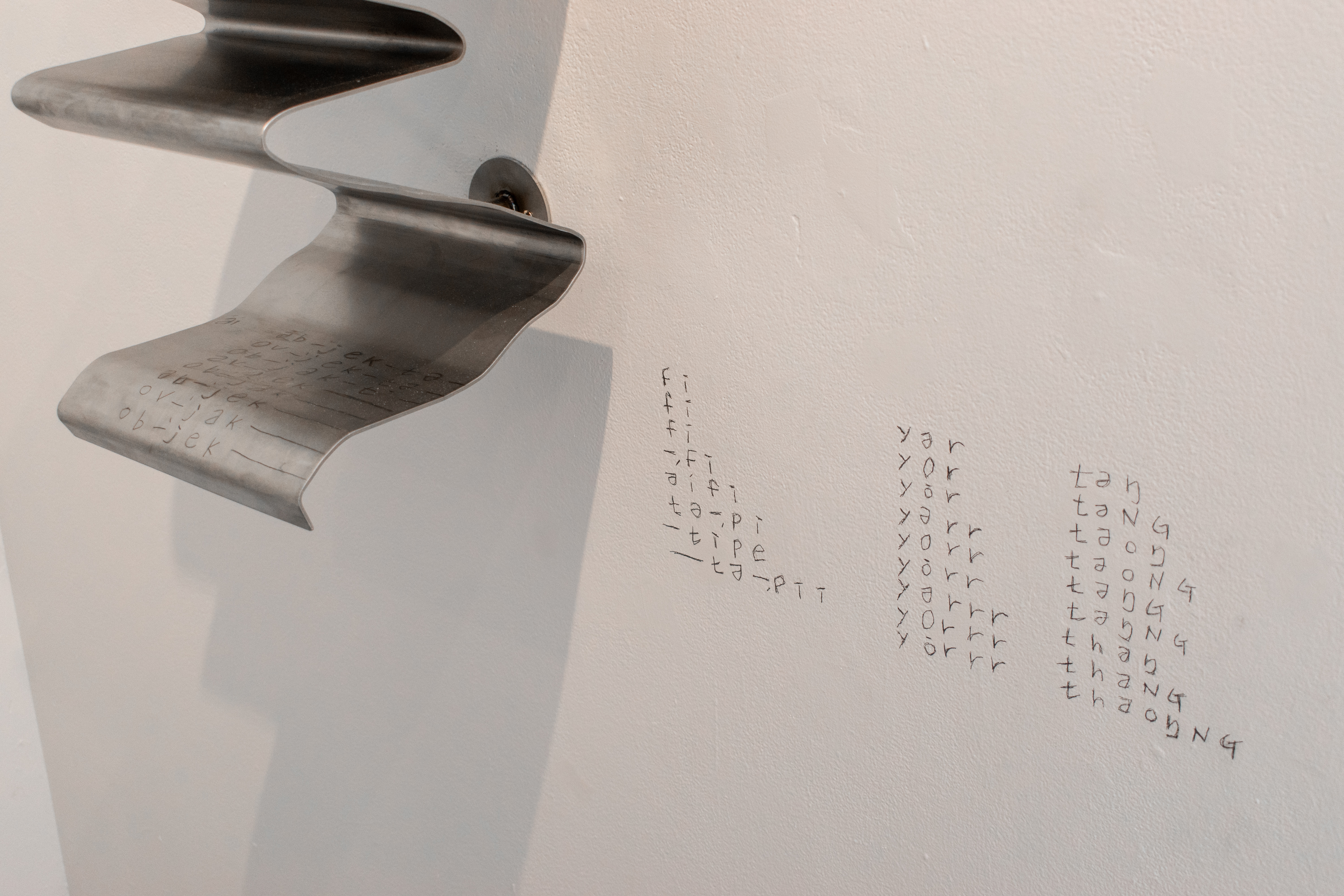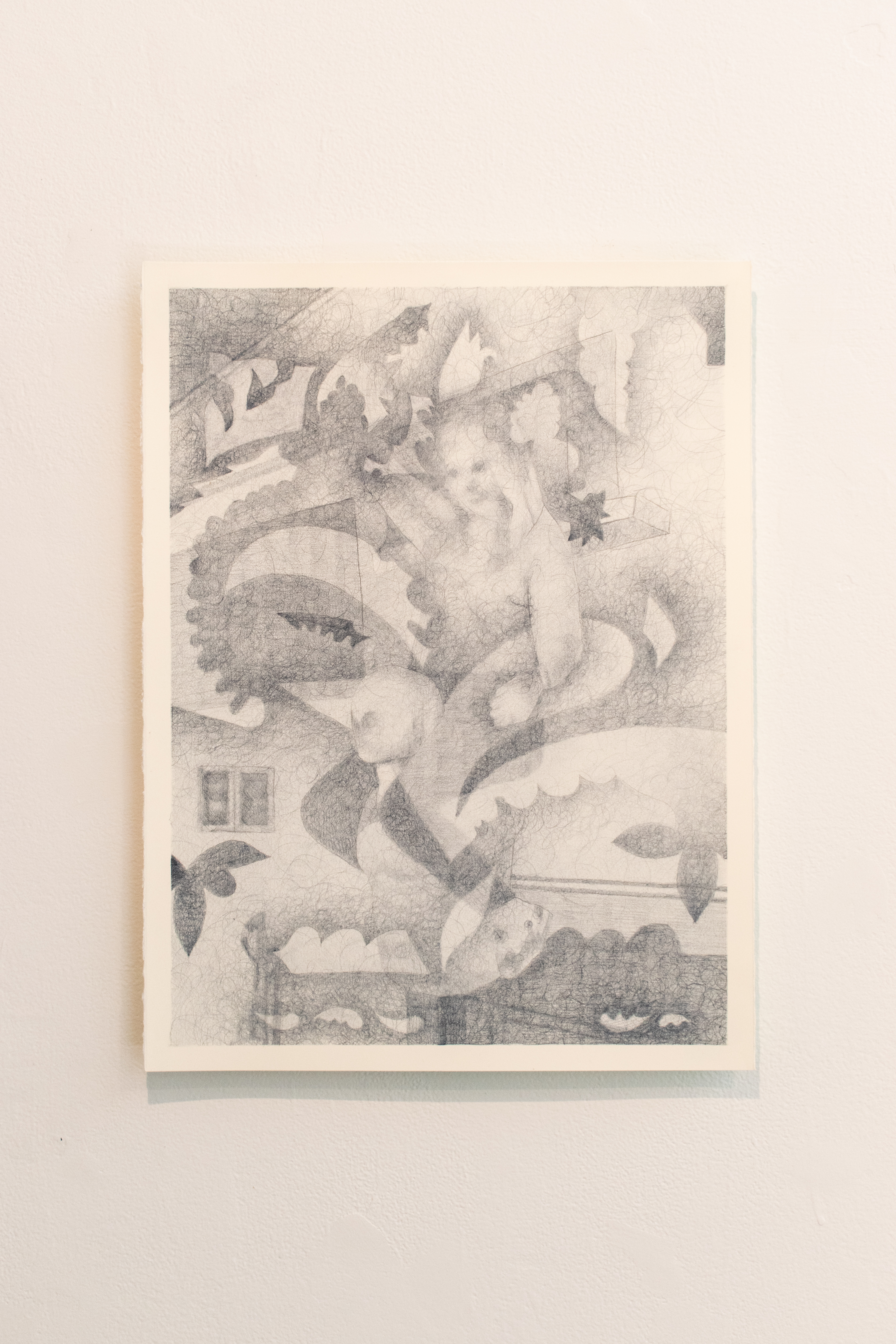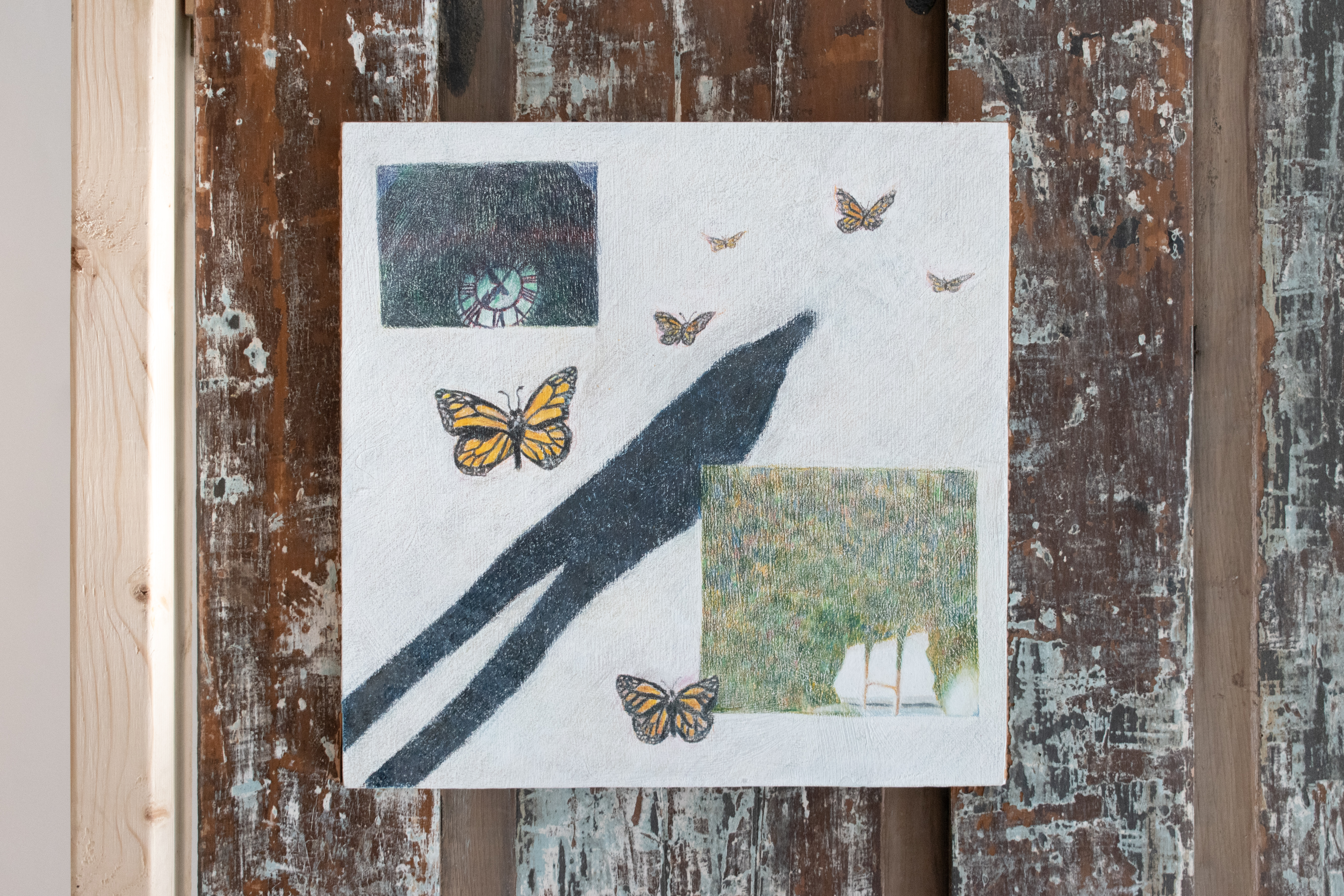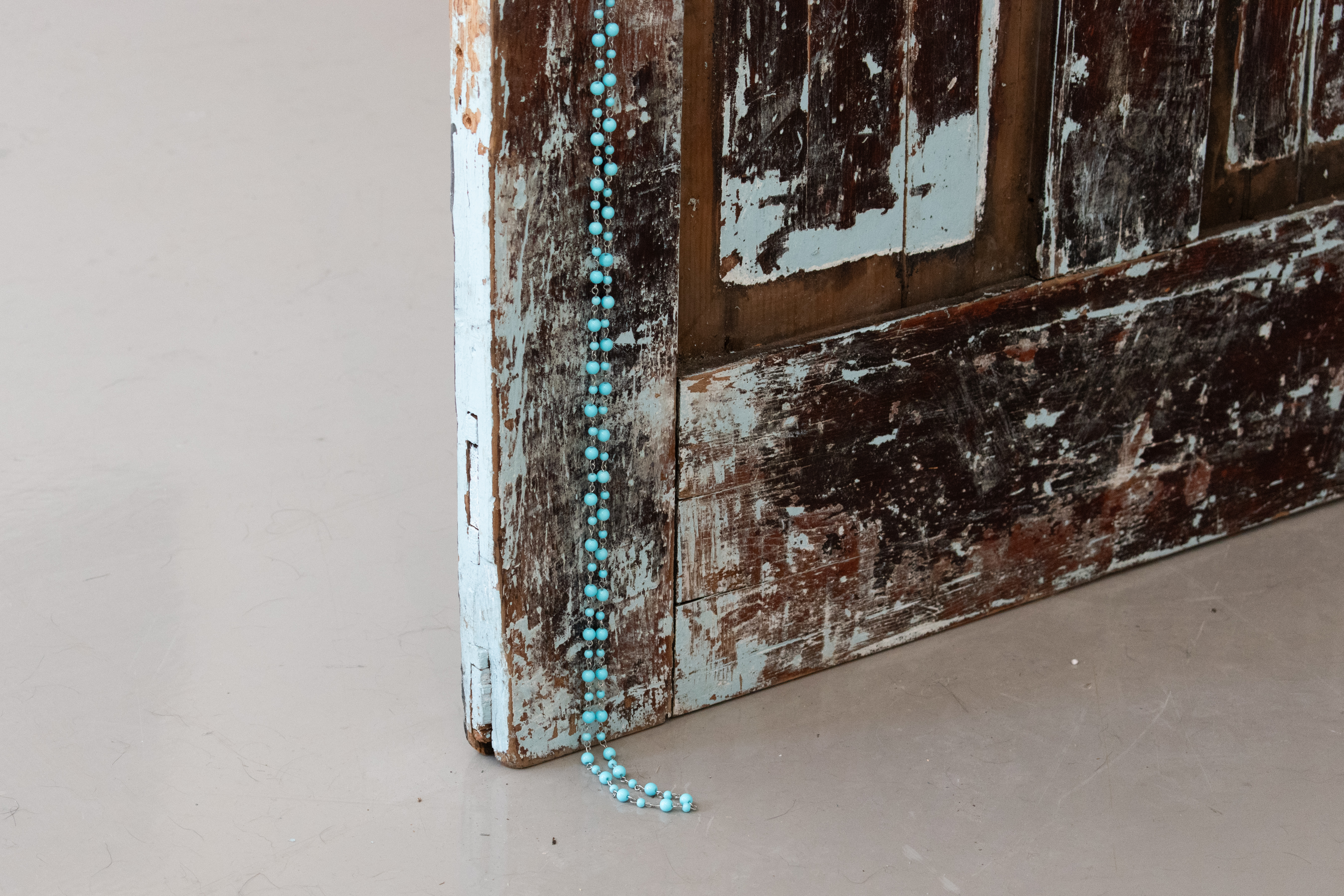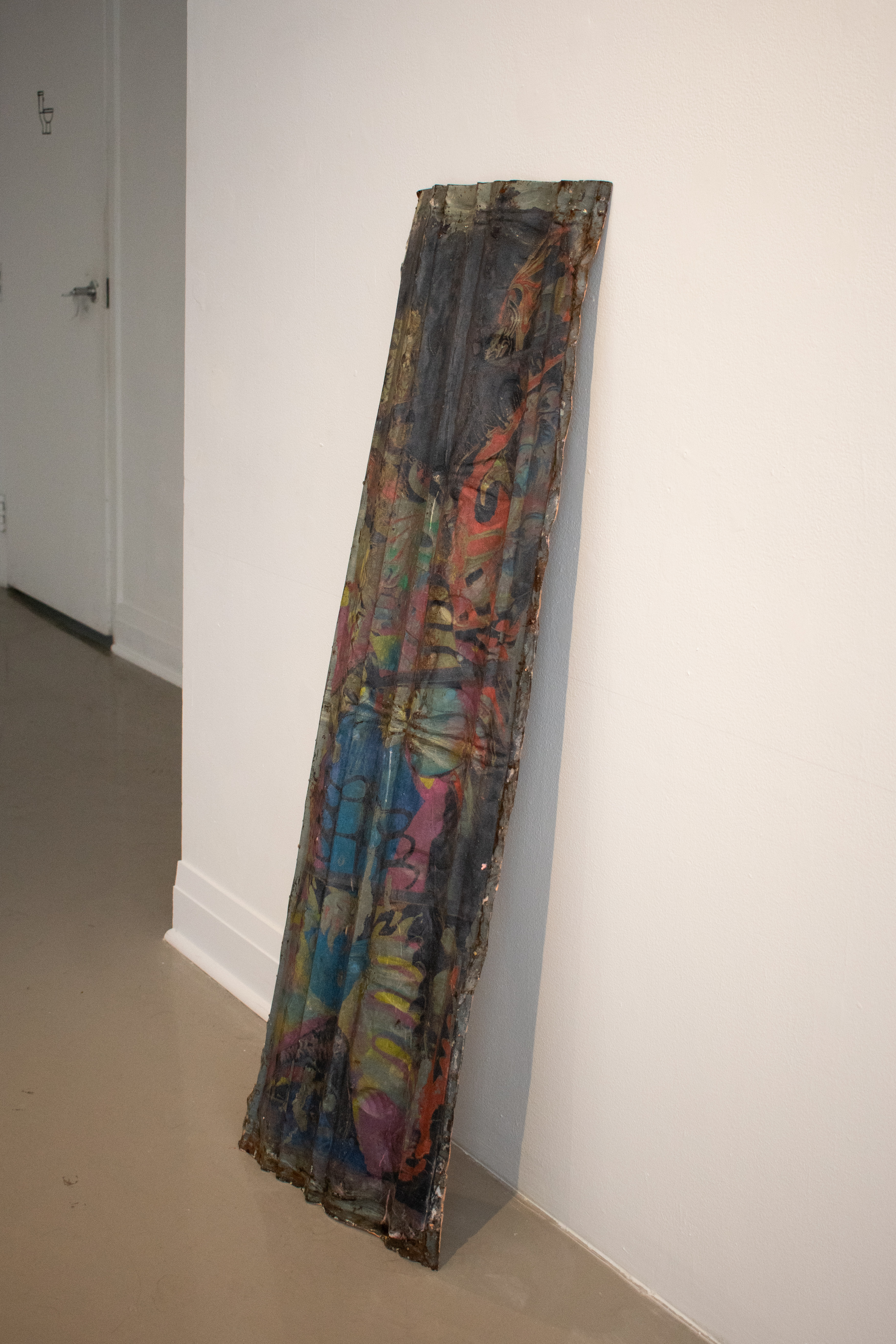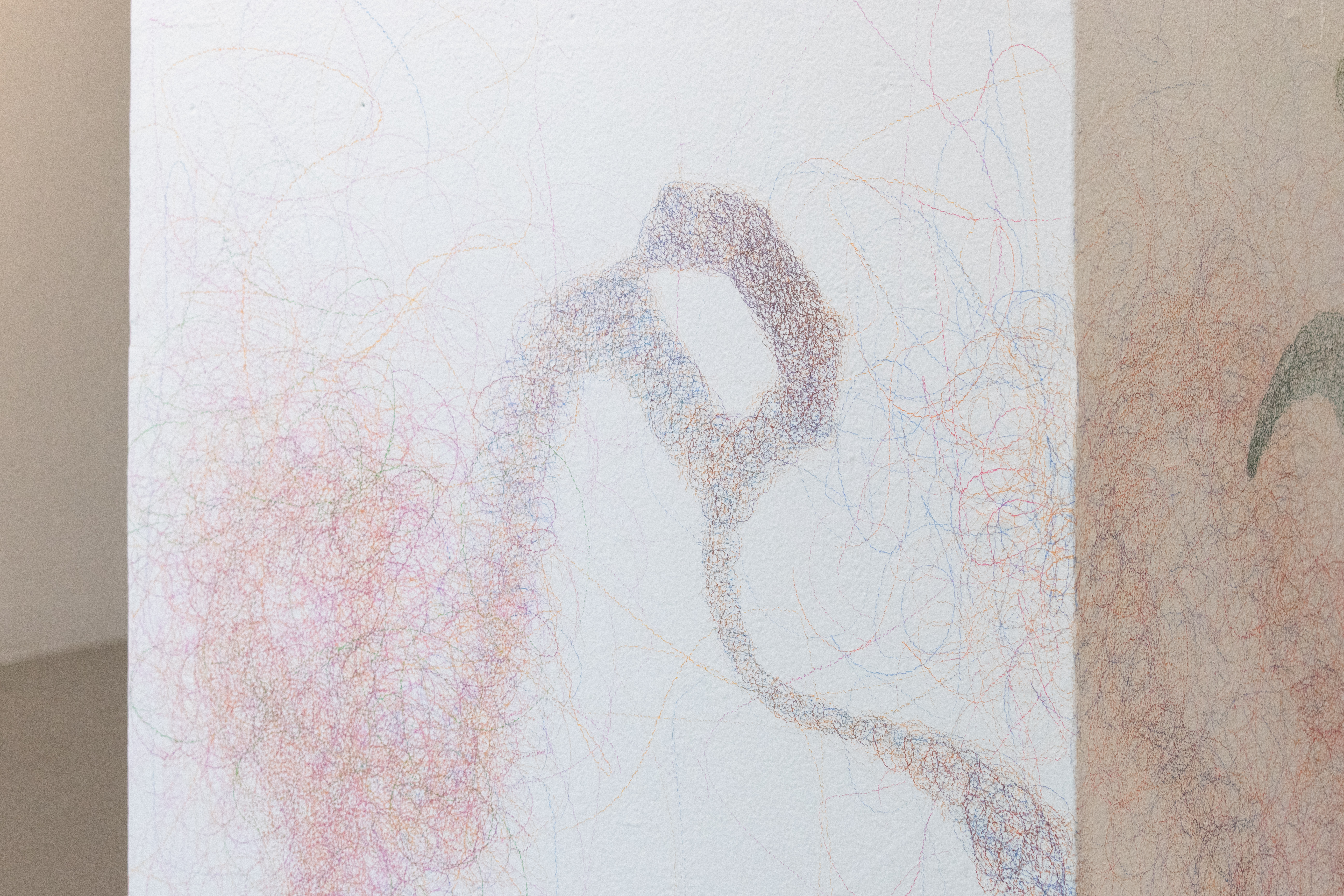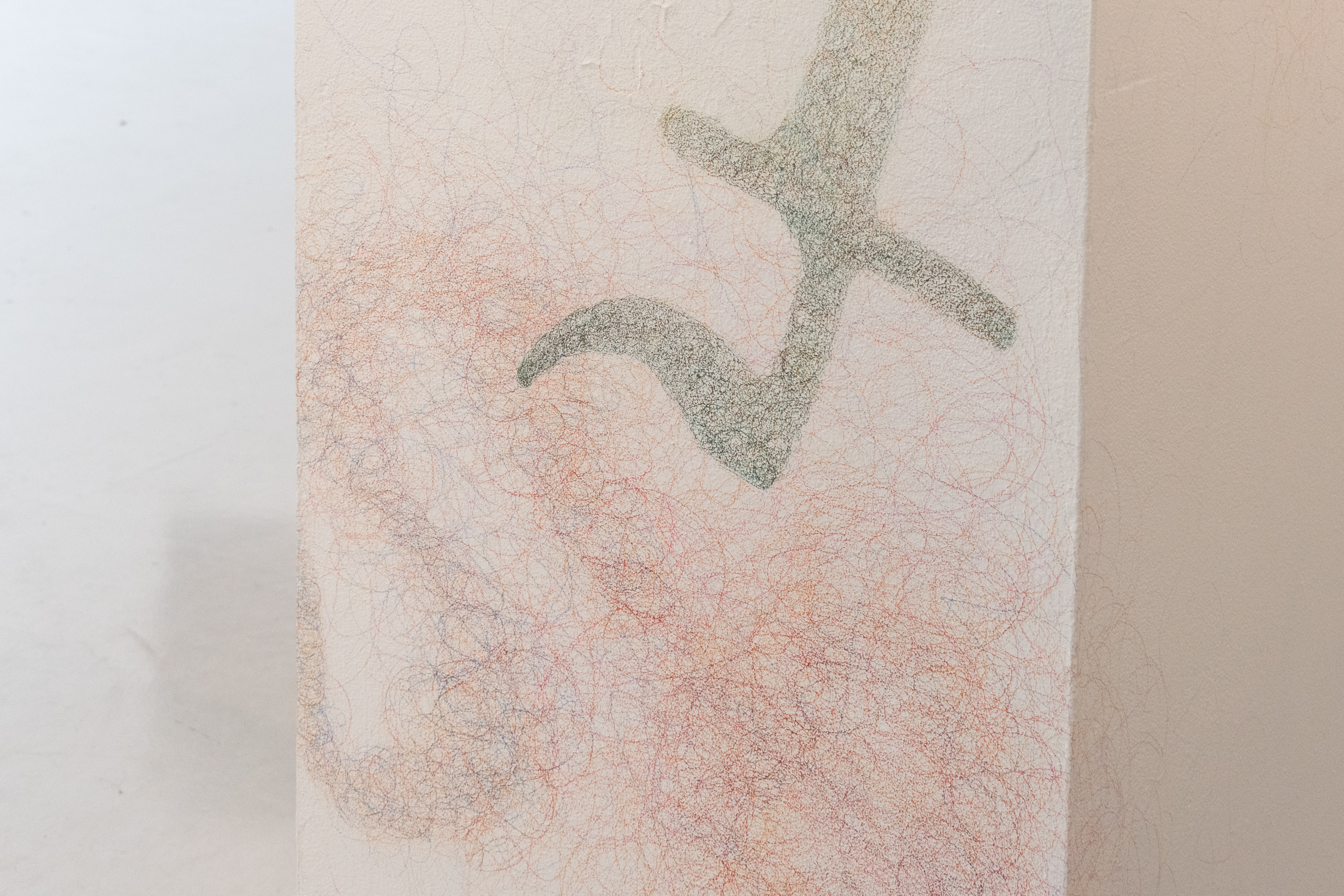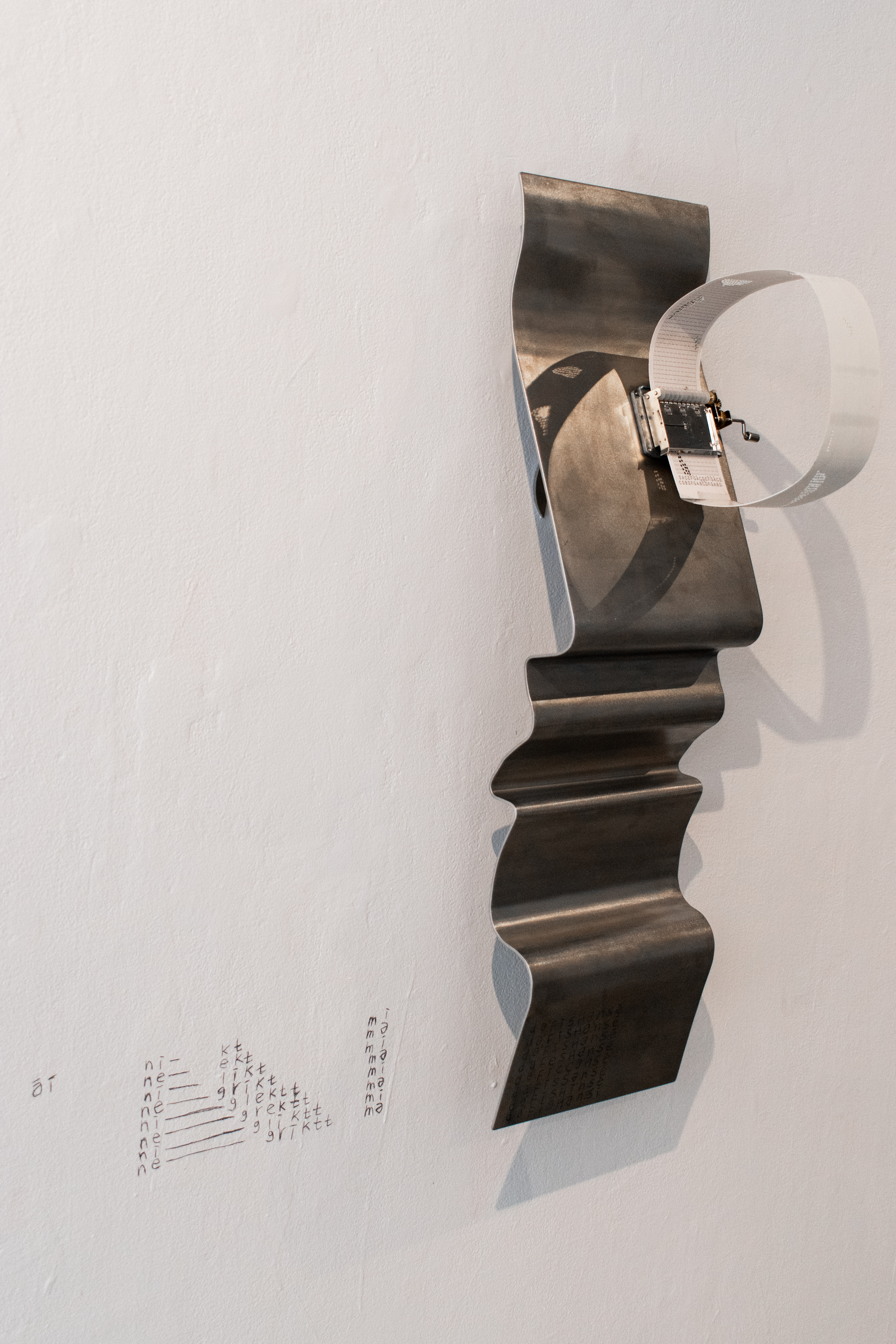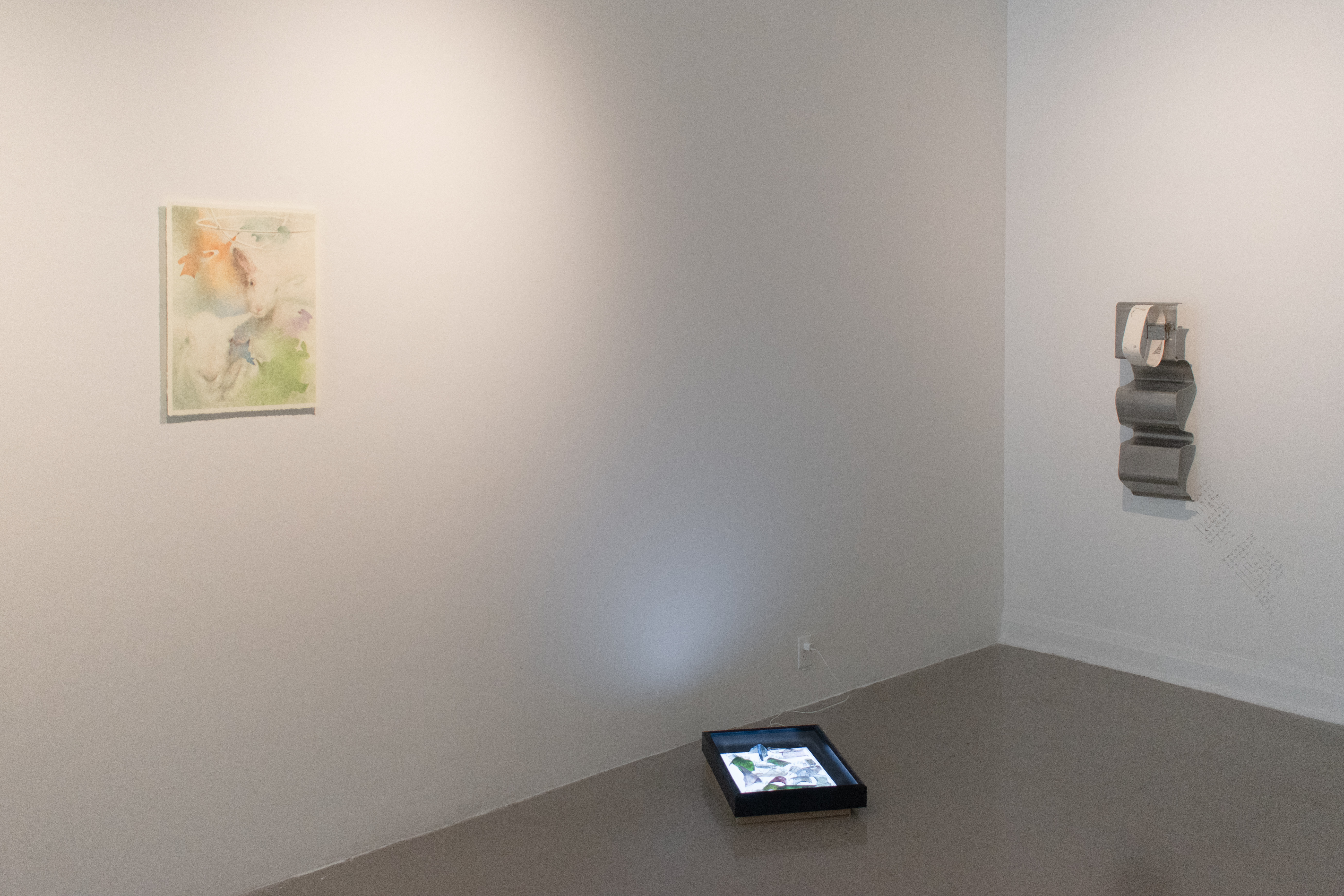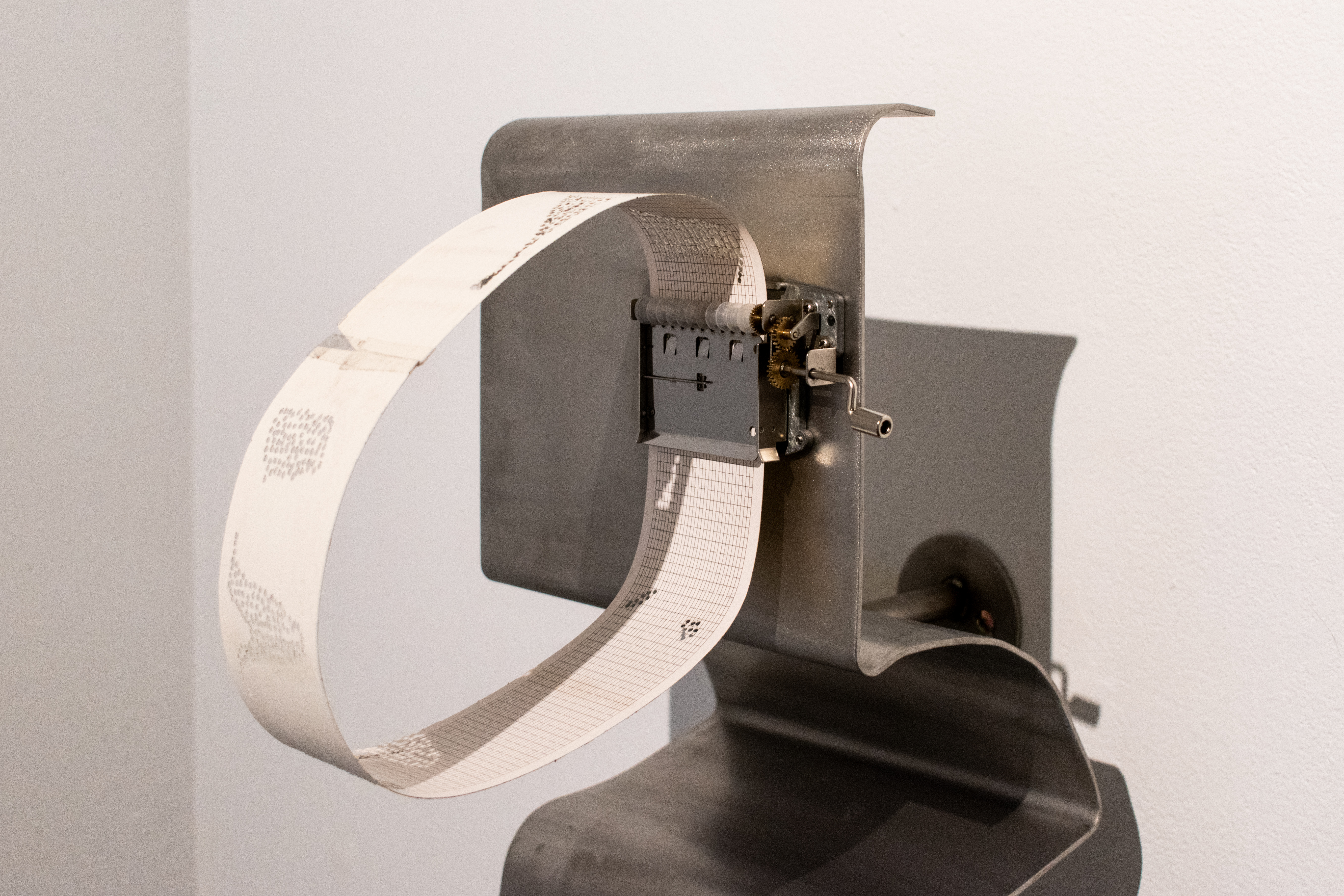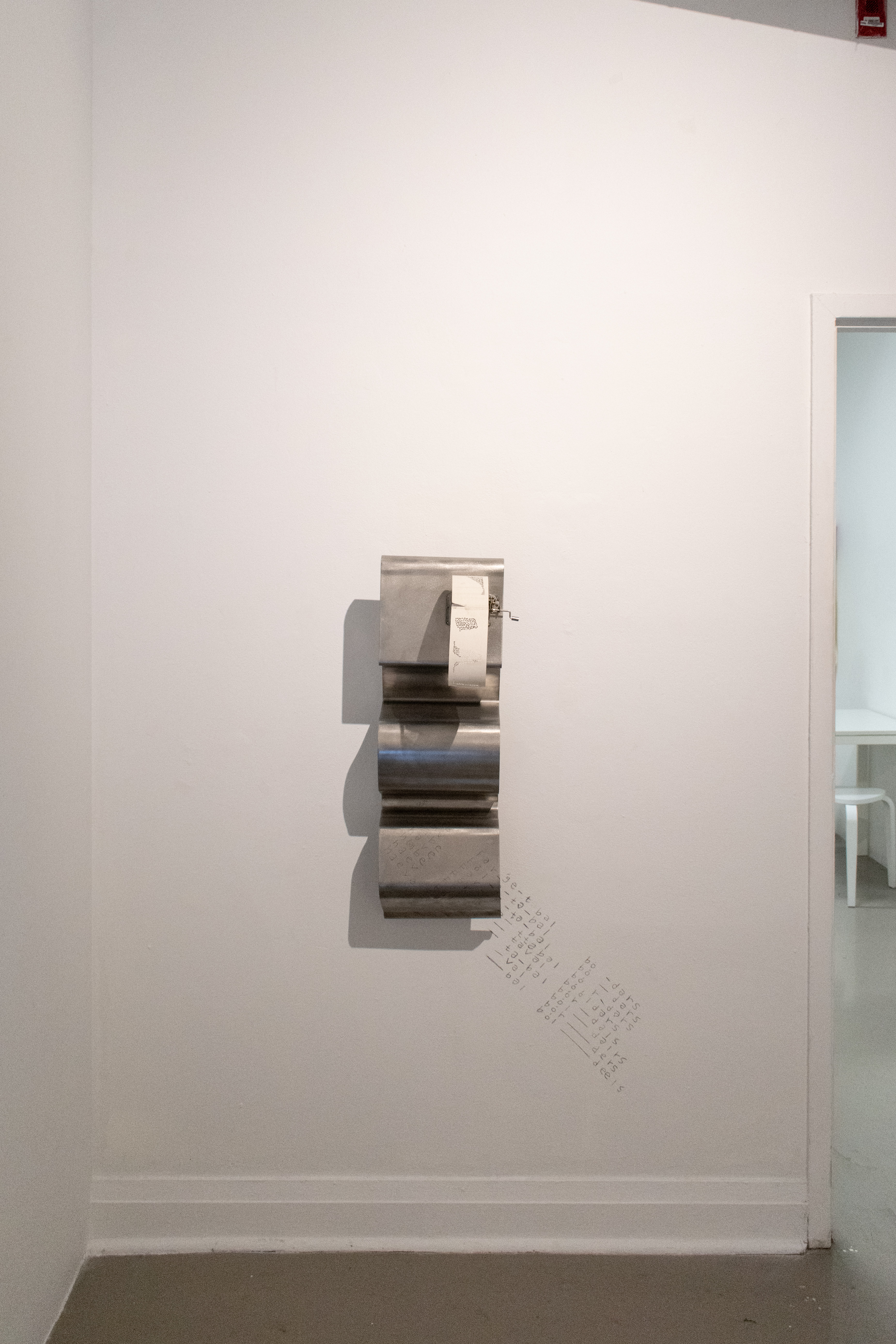The Flora and the Framework
Meghan Harder, Ivetta Sunyoung Kang, Ernesto Cabral de Luna, and chris mendoza
Through the gestures of pencils sweeping across pillar and paper, Meghan Harder’s lush drawing work riffs on archival materials reflective of memories found in public and private archives. From everyday images sourced from the vast community of social media to the words, sounds, and shapes found in Mennonite poetry, Harder translates it all past the silo of the individual and into a new commonplace.
Folded sheets of stainless aluminum make up Ivetta Sunyoung Kang’s When The Others Lick Underneath Your Tongue. These sculptures serve as containers for corresponding music boxes! Please play them with care. Seeking connection whilst acknowledging the diasporic limitations of language structures, here the aphasic tongue stumbles and utters but also embraces a melodic transcendence. These phonetic sculptures transcribe the soundwaves of three phrases.
Ernesto Cabral de Luna transfers photographs onto corrugated metal and broken glass, abstracting images taken on a visit to Mexico across weathered and splintered surfaces. Alluding to how photography attempts to distill memory into a composition of grain and pixels mirrors the nostalgic impulse to utilize structural materials: Seeking to preserve moments of curious connection, memory then needs to rest on a surface strong enough to house or protect its joyous, fleeting weight. These works point to the cultural propensity of these materials to provide shelter, define geographic borders, and navigate the permeable limits of uprooted cultural identities.
The freestanding doors of chris mendoza’s a long cast shadow are thresholds for the drawings, footage, and places they guide you to. Echoing the structural framework of an amorphous space, this installation combines imagery from personal photographs with dreamt symbology. mendoza muses that the dense quality of grain may elucidate a texture for memories; captured by lenses and drawn on surfaces. Doors inlaid with drawings become gateways to spaces inhabited and histories inherited. Here, we ask you to orient yourself within and around this exercise in placemaking.
![]()
![]()
![]()
![]()
![]()
![]()
![]()
![]()
![]()
![]()
![]()
![]()
![]()
![]()
![]()
![]()
![]()
![]()
![]()
![]()
![]()
Meghan Harder, Ivetta Sunyoung Kang, Ernesto Cabral de Luna, and chris mendoza
Through the gestures of pencils sweeping across pillar and paper, Meghan Harder’s lush drawing work riffs on archival materials reflective of memories found in public and private archives. From everyday images sourced from the vast community of social media to the words, sounds, and shapes found in Mennonite poetry, Harder translates it all past the silo of the individual and into a new commonplace.
Folded sheets of stainless aluminum make up Ivetta Sunyoung Kang’s When The Others Lick Underneath Your Tongue. These sculptures serve as containers for corresponding music boxes! Please play them with care. Seeking connection whilst acknowledging the diasporic limitations of language structures, here the aphasic tongue stumbles and utters but also embraces a melodic transcendence. These phonetic sculptures transcribe the soundwaves of three phrases.
Ernesto Cabral de Luna transfers photographs onto corrugated metal and broken glass, abstracting images taken on a visit to Mexico across weathered and splintered surfaces. Alluding to how photography attempts to distill memory into a composition of grain and pixels mirrors the nostalgic impulse to utilize structural materials: Seeking to preserve moments of curious connection, memory then needs to rest on a surface strong enough to house or protect its joyous, fleeting weight. These works point to the cultural propensity of these materials to provide shelter, define geographic borders, and navigate the permeable limits of uprooted cultural identities.
The freestanding doors of chris mendoza’s a long cast shadow are thresholds for the drawings, footage, and places they guide you to. Echoing the structural framework of an amorphous space, this installation combines imagery from personal photographs with dreamt symbology. mendoza muses that the dense quality of grain may elucidate a texture for memories; captured by lenses and drawn on surfaces. Doors inlaid with drawings become gateways to spaces inhabited and histories inherited. Here, we ask you to orient yourself within and around this exercise in placemaking.






